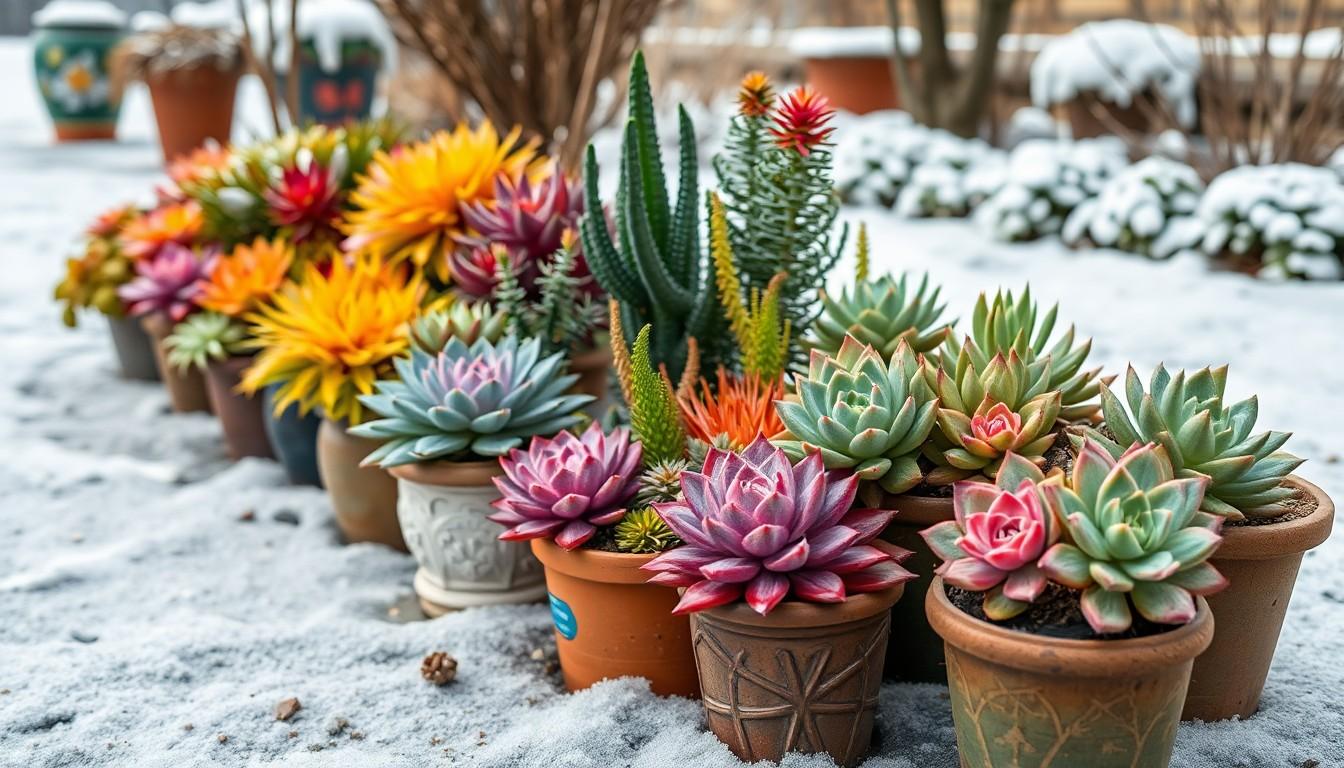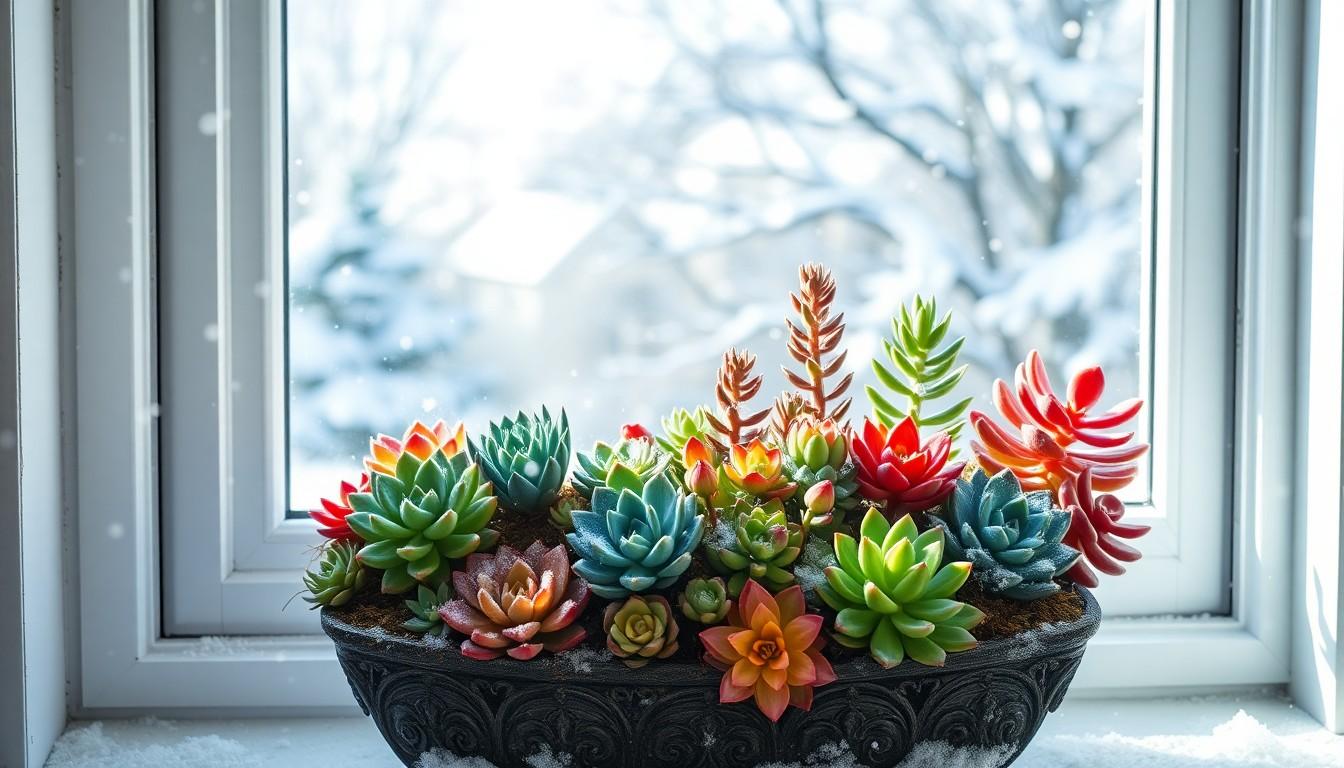When the temperature drops and the snow starts to fall, many plant lovers find themselves asking a crucial question: can succulents survive winter? These charming little plants, known for their resilience, might just be tougher than they look. But don’t let their cute appearances fool you; winter can be a formidable foe for these desert dwellers.
Can Succulents Survive Winter?
Succulents can survive winter, but specific conditions influence their resilience. Cold temperatures pose risks, particularly when they drop below 20°F (-6°C). Those that stay indoors, especially in bright, sunny spots, usually endure winter better. When placed outdoors, succulents require protection from frost and extreme weather to thrive.
Certain species show more hardiness than others. For instance, hens and chicks (Sempervivum) and certain agaves tolerate colder environments effectively. These varieties can withstand temperatures as low as 5°F (-15°C) without severe damage. On the other hand, many common house succulents, like Echeveria and jade plants, need additional care in winter months.
Moisture control becomes crucial during this season. Overwatering during winter leads to root rot, while under-watering can cause dehydration. It’s essential to allow the soil to dry completely between waterings, maintaining a balance that supports survival without risking deterioration.
Adjust light exposure as well. Shorter days may reduce light levels, impacting growth. Providing supplemental light with grow lights can ensure succulents receive adequate illumination, encouraging healthy winter phases.
While succulents display incredible adaptability, careful attention is required during winter months. Choosing the right variety, managing environmental factors, and monitoring moisture levels help ensure success through cold spells.
Understanding Succulents

Succulents are unique plants that thrive in arid conditions, adapting to store water in their leaves, stems, and roots. These adaptations allow them to survive prolonged periods of drought.
What Are Succulents?
Succulents belong to various plant families, characterized by their fleshy, thickened tissues. They often feature a range of shapes, sizes, and colors. Popular types include Echeveria, Sedum, and jade plants. Each type has distinct care needs, affecting their resilience during winter months. Understanding these specifics enhances their longevity and health.
Why Winter Care Matters
During winter, succulents face challenges due to colder temperatures and reduced sunlight. Protecting them from frost is crucial, especially for varieties less tolerant of extreme cold. Proper moisture management becomes even more vital, as overwatering can lead to root rot. Adjusting light exposure also plays a key role; shorter days can reduce light levels significantly. Effective winter care ensures these plants retain their health into the growing season.
Common Types of Succulents
Succulents vary in hardiness, with some able to endure harsh winter conditions. Understanding the differences helps in choosing the right plants for winter survival.
Cold-Hardy Succulents
Cold-hardy succulents withstand freezing temperatures. Sempervivum, or hens and chicks, thrive down to 5°F (-15°C) and tolerate frost effectively. Delosperma, known as ice plant, serves well in similar climates, flourishing despite cold. Agave species, particularly Agave parryi, also survive lower temperatures. These succulents often require minimal additional care, making them ideal for outdoor gardens during winter months.
Tender Succulents
Tender succulents struggle in cold weather. Echeveria and jade plants fall into this category, as they cannot endure temperatures below 20°F (-6°C). Overwintering indoors in bright light promotes their health. Protecting these varieties from frost helps prevent damage. Higher humidity levels indoors also assist in maintaining moisture balance, which is crucial for their survival. Careful monitoring of temperature and light conditions ensures their vitality through winter.
Preparing Succulents for Winter
Proper preparation enhances the chances of succulents thriving through winter. Taking the right steps ensures these resilient plants endure the colder months effectively.
Indoor Care Tips
Indoor succulents require specific attention to thrive during winter. First, positioning them in bright, sunny locations maximizes light exposure. Next, reducing watering frequency protects against root rot. Observing soil dryness before watering is crucial, as succulents store water in their leaves. Additionally, using grow lights compensates for the reduction in natural light during shorter days. Maintaining indoor humidity around 40-50% benefits moisture balance, especially for tender varieties like jade plants. Lastly, placing a humidity tray can help achieve the ideal atmosphere.
Outdoor Care Tips
Outdoor succulents face unique winter challenges, necessitating preventive measures. Wrapping plants with frost cloth protects them from freezing temperatures. Furthermore, relocating potted succulents to sheltered areas, like garages or covered patios, can minimize exposure to harsh weather. Mulching around garden succulents insulates roots and conserves moisture. During particularly cold spells, using blankets or burlap can shield delicate varieties. Properly arranging cold-hardy succulents near walls or structures offers additional protection. Ensuring a dry environment is essential; wet soil can lead to frost damage during freezing nights.
Signs of Stress in Succulents
Succulents display various indications of stress during winter. Yellowing leaves often signal overwatering, which may lead to root rot. Droopy leaves can suggest dehydration; affected plants need immediate watering.
Another sign includes shriveling or wrinkled leaves, indicating the plant lacks adequate moisture. Leaf drop frequently occurs when succulents experience stress from temperature shifts. Dark patches on leaves suggest fungal issues, often caused by excess moisture or poor air circulation.
Pale leaves may signify insufficient light exposure, particularly during shorter winter days. These plants may also experience stunted growth due to inadequate environmental conditions. If the soil remains soggy, it’s essential to adjust watering practices immediately.
When leaf tips turn brown and crispy, the plant may be suffering from poor humidity or too much direct sunlight. Leaves losing their vibrant colors indicate stress, showing that the plant struggles to adapt to winter.
Inspecting succulents regularly helps identify these stress signs early. Monitoring their environment ensures that appropriate adjustments are made in response to their needs. Taking proactive measures can significantly increase the chances of over-wintering successfully.
Conclusion
Succulents can indeed survive winter with the right care and attention. By understanding their specific needs and adapting their environment, plant lovers can ensure these resilient plants thrive even in colder months. Cold-hardy varieties offer some peace of mind for outdoor gardens, while tender types require thoughtful indoor management.
Monitoring moisture levels and providing adequate light are crucial for maintaining their health. With proper preparation and vigilance, succulents can not only survive winter but emerge ready to flourish in the spring. Embracing these practices will lead to thriving plants that bring joy throughout the seasons.

